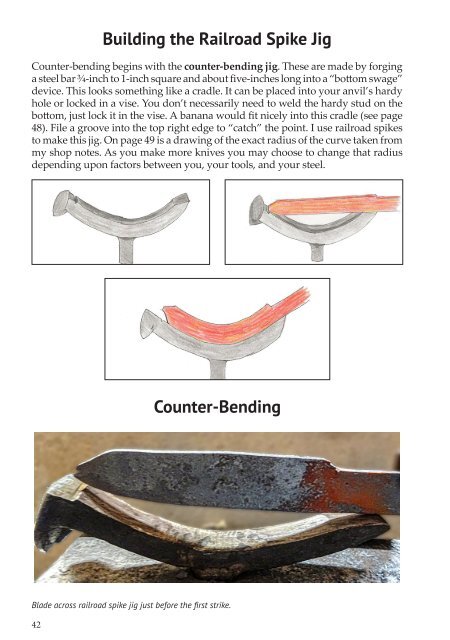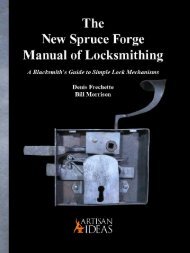FORGED: Making a Knife with Traditional Blacksmith Skills
This book will teach you to hand build a knife using the traditional method of blacksmiths of old — FORGING. Traditional forging of a knife blade is a process which uses the ancient techniques of moving hot steel with hammer and anvil alone into a knife-form that is ready for filing, heat treating and sharpening with no or very minimal electric grinding. This book also teaches traditional fit-and-finish skills using only hand tools. It explains an ancient riveted full-tang handle construction system that surpasses modern methods. In the author's words; "In my early blacksmithing years, I was lucky to get to know some old smiths who wrangled hot iron every day just to make a living. They unselfishly taught me traditional blacksmithing skills and knife forging methods. Every time I use those skills and methods, I honor their friendships, and by teaching you, the reader, we keep alive the memory of those old-time iron pounders." Hardcover, 132 pages, 150 photos and illustrations, $29.95.
This book will teach you to hand build a knife using the traditional method of blacksmiths of old — FORGING.
Traditional forging of a knife blade is a process which uses the ancient techniques of moving hot steel with hammer and anvil alone into a knife-form that is ready for filing, heat treating and sharpening with no or very minimal electric grinding.
This book also teaches traditional fit-and-finish skills using only hand tools. It explains an ancient riveted full-tang handle construction system that surpasses modern methods.
In the author's words; "In my early blacksmithing years, I was lucky to get to know some old smiths who wrangled hot iron every day just to make a living. They unselfishly taught me traditional blacksmithing skills and knife forging methods. Every time I use those skills and methods, I honor their friendships, and by teaching you, the reader, we keep alive the memory of those old-time iron pounders."
Hardcover, 132 pages, 150 photos and illustrations, $29.95.
You also want an ePaper? Increase the reach of your titles
YUMPU automatically turns print PDFs into web optimized ePapers that Google loves.
Building the Railroad Spike Jig<br />
Counter-bending begins <strong>with</strong> the counter-bending jig. These are made by forging<br />
a steel bar ¾-inch to 1-inch square and about five-inches long into a “bottom swage”<br />
device. This looks something like a cradle. It can be placed into your anvil’s hardy<br />
hole or locked in a vise. You don’t necessarily need to weld the hardy stud on the<br />
bottom, just lock it in the vise. A banana would fit nicely into this cradle (see page<br />
48). File a groove into the top right edge to “catch” the point. I use railroad spikes<br />
to make this jig. On page 49 is a drawing of the exact radius of the curve taken from<br />
my shop notes. As you make more knives you may choose to change that radius<br />
depending upon factors between you, your tools, and your steel.<br />
Counter-Bending<br />
Blade across railroad spike jig just before the first strike.<br />
42










